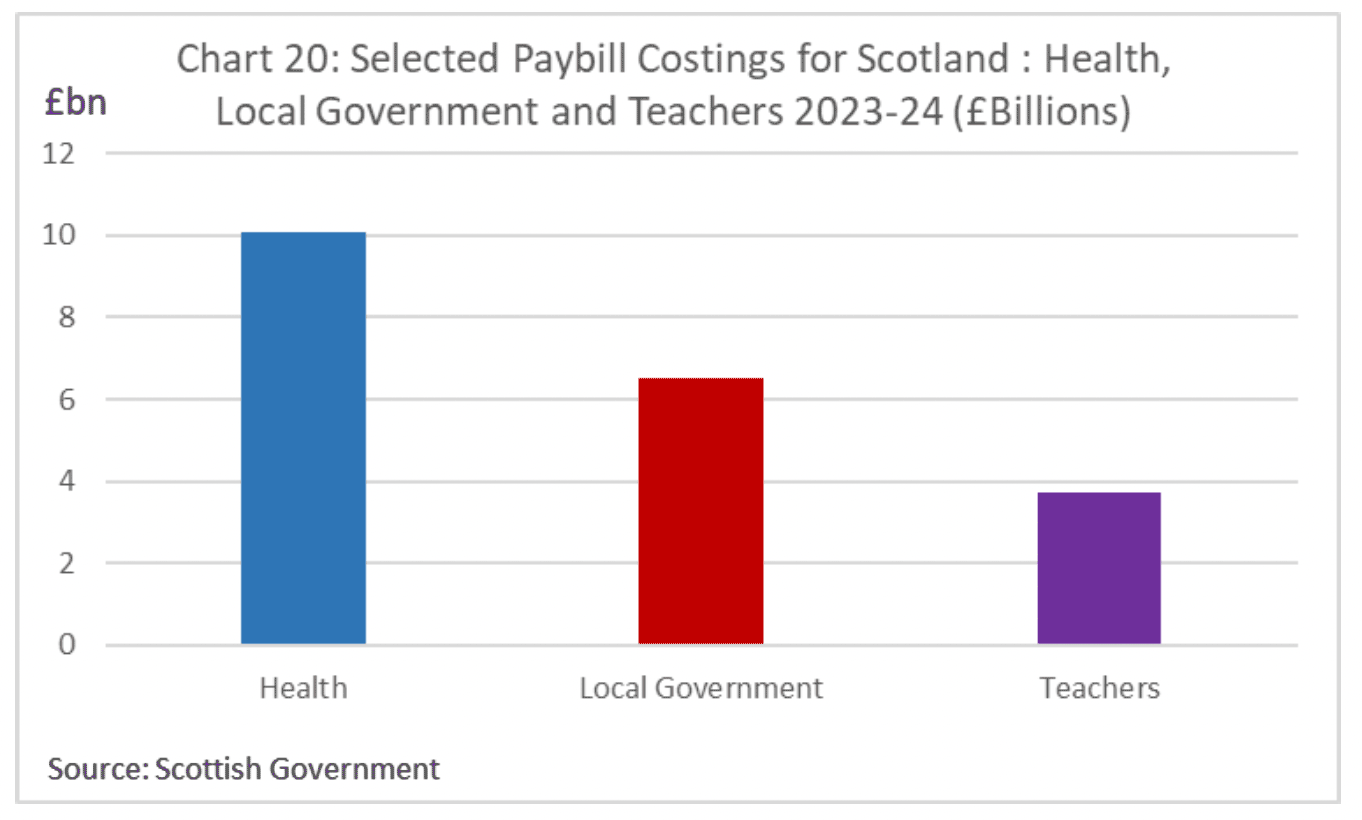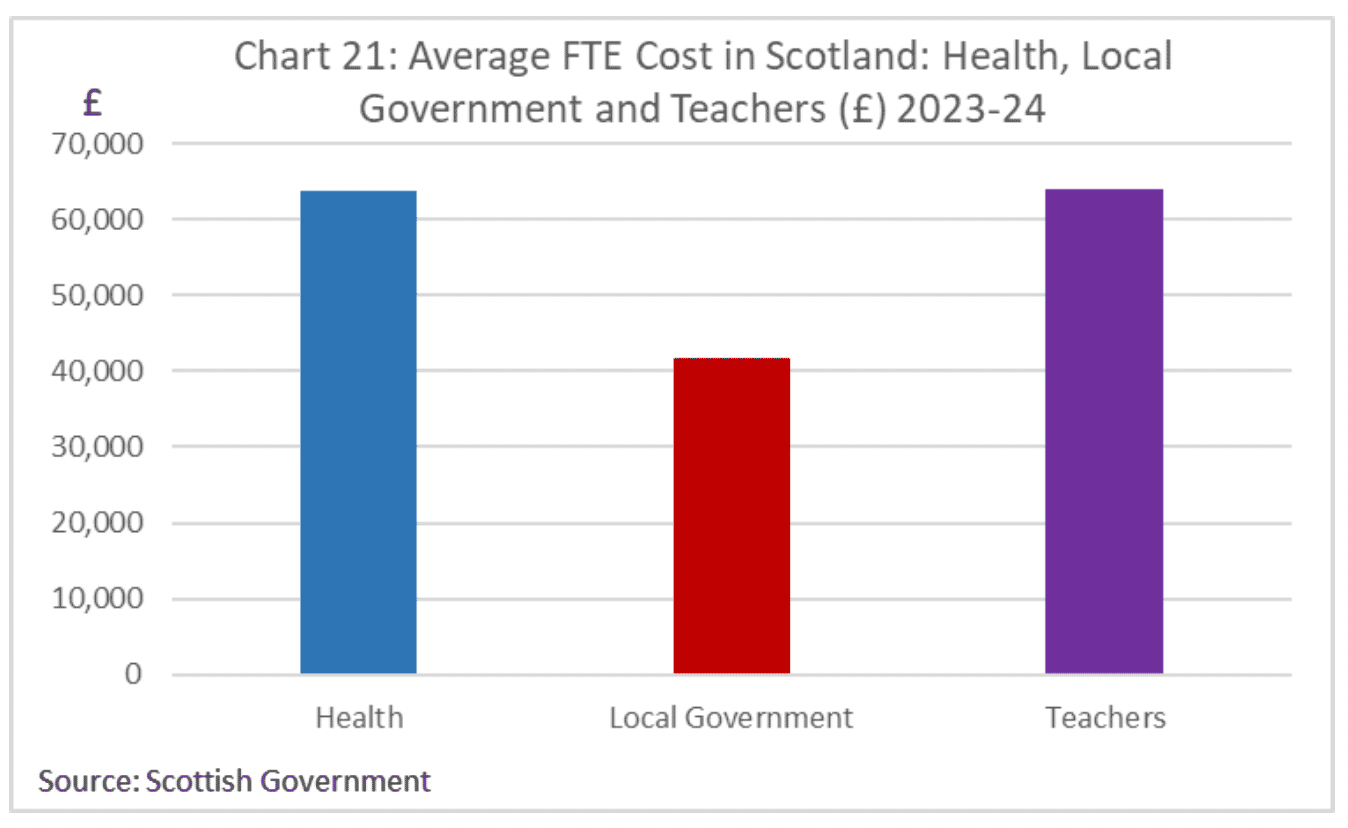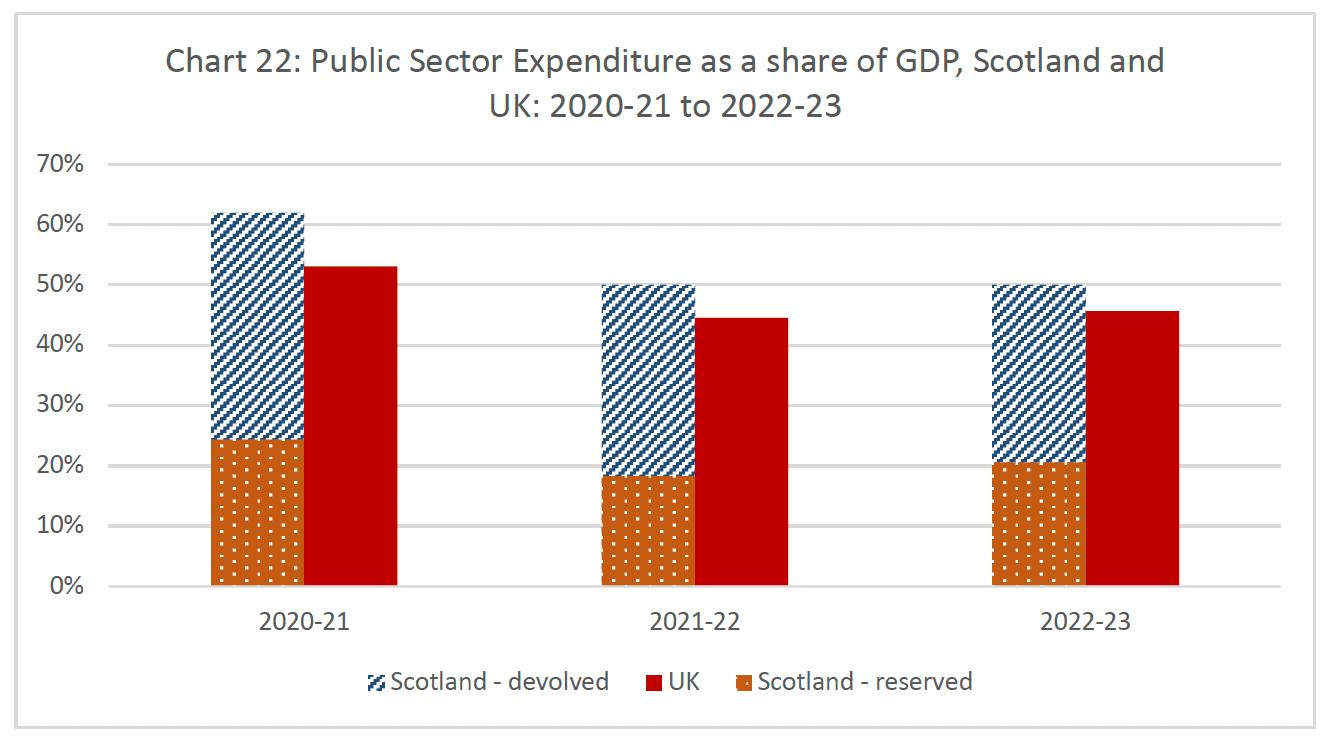Public sector: economic overview
This analytical note brings together key economic data and analysis in relation to the Scottish public sector, covering both its size and pay levels. It considers how the size and employment in the public sector has changed over time and how it compares to other parts of the UK and internationally.
Public Sector Pay and Budgets
Public sector pay is an important part of the overall budget, with the total paybill for 2023-24 around £25 billion, or over 50% of the Scottish Government resource budget. Within this, Health, Local Government and teacher paybill account for 80 per cent of the total at £20 billion. Pay settlements in these areas, relative to UK, have a significant impact on cost of delivery and are typically a benchmark for wider public sector deals. Chart 20 shows selected paybill costings for Scotland for health, local government and teachers and Chart 21 shows the average FTE cost.


Higher public sector pay in Scotland reflects higher public spending in general. Public spending in Scotland in 2022-23 was 50.1% of GDP in 2022-23, compared to 45.1% of GDP for the UK as shown in Chart 22.[7] This has been a persistent feature of the public sector in Scotland, and reflects the size of the block grant, driven by the Barnett formula and slower population growth in Scotland.

While there are no official estimates of how spending on devolved services compares in Scotland to other parts of the UK, analysis by the Institute of Fiscal Studies suggest that it is between 25% and 30% higher per person in Scotland.[8]
Although not an intended feature of the Barnett formula, it is sometimes argued that higher public spending in Scotland could be justified on the ground that the cost of delivering services is higher, given that some parts of Scotland are much more rural and remote. The Health resource allocation formula reflects the excess costs of delivery in remote and rural areas as shown in Chart 23. Costs are around 20% higher in the Islands. In general, however, it is difficult to evidence this point. There has been no recent needs assessments undertaken for Scotland. In 2010, the Holtham Commission in Wales, which found that relative need was 15% higher in Wales than England, suggested that relative need was only 5% higher in Scotland. However, the Commission noted that this finding was only broadly indicative, as there were differences in the functions devolved to Scotland. Most notably, law and order and justice, and proceeds from non-domestic rates, were not devolved in Wales.[9] There have also been some academic studies, for example by King and Eiser (2017)[10] and Ball, King and Eiser (2012),[11] but these have focussed more on specific policy areas such as health or education, rather than looking at public spending as a whole.

The Barnett Formula and Public Sector Pay
As noted above, the Scottish public sector pay bill has increased significantly in 2023-24, and is now around £25 billion. Therefore, a 1 percent increase in it costs around £250 million.
If the UK allocates additional spending for pay deals this would feed through to the Scottish budget via the Barnett formula and would result in additional consequentials for Scotland. But with relatively more public sector workers in Scotland, as well as higher average median pay, matching the growth rates of UK pay deals in Scotland costs more that the consequentials received from the UK Government.
Providing more generous pay deals in Scotland further increases the funding required. With a fixed budget, this would have to be covered by: reducing spending in other (non-pay) areas; reforming service delivery to reduce costs (including headcount); or increased taxation or charging.
Given the size of their workforce, pay settlements for health and education are crucial for determining cost of pay deals, as well as signalling level of pay deals for other parts of the public sector.
Contact
Email: OCEABusiness@gov.scot
There is a problem
Thanks for your feedback